radiator cap CHEVROLET CAMARO 1996 4.G Owners Manual
[x] Cancel search | Manufacturer: CHEVROLET, Model Year: 1996, Model line: CAMARO, Model: CHEVROLET CAMARO 1996 4.GPages: 402, PDF Size: 21.38 MB
Page 223 of 402
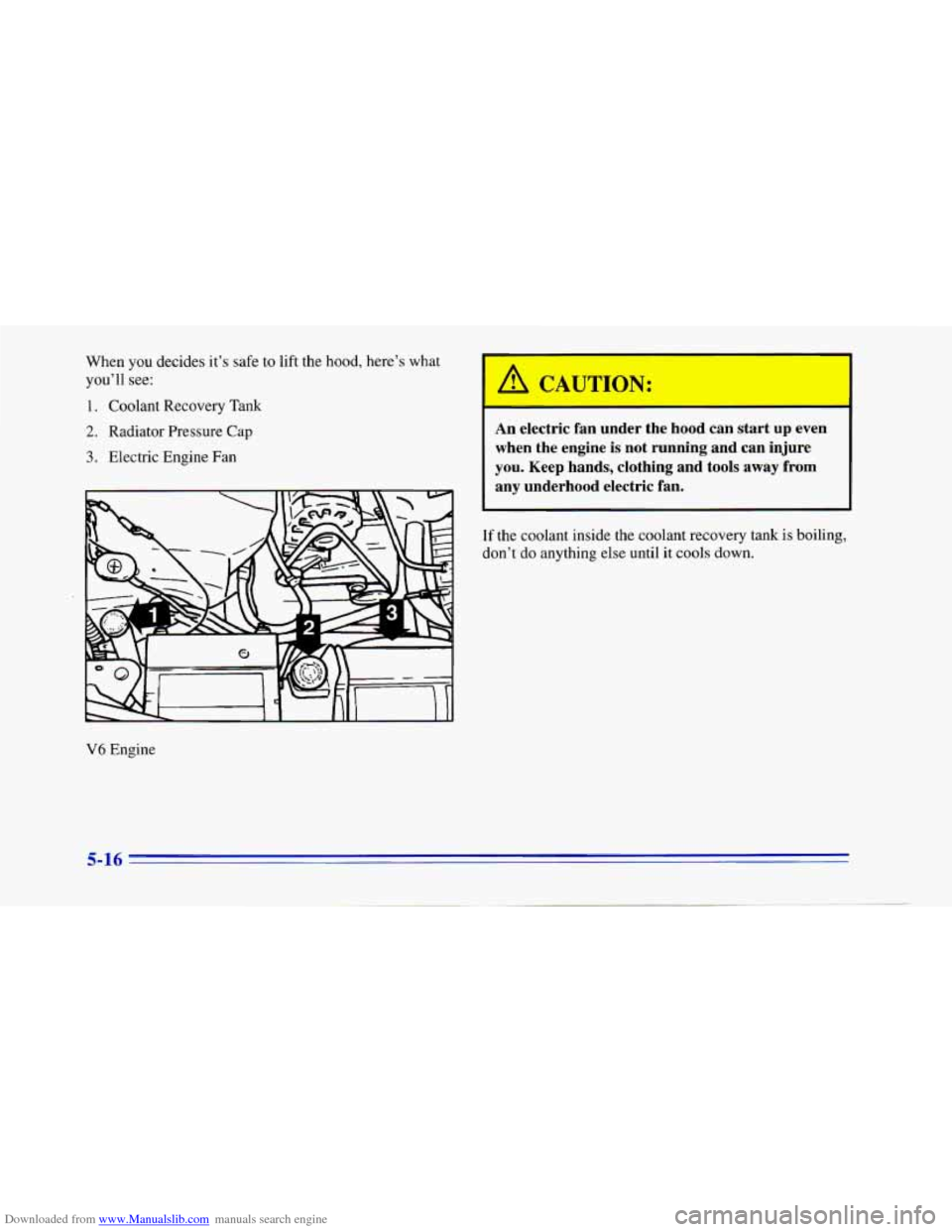
Downloaded from www.Manualslib.com manuals search engine When you decides it’s safe to lift the hood, here’s what
you’ll see:
1. Coolant Recovery Tank
2. Radiator Pressure Cap
3. Electric Engine Fan
If the coolant inside the coolant recovery tank is boiling,
don’t
do anything else until it cools down.
V6 Engine
/d CAUTION:
An electric fan under the hood can start up even
when the engine is not running and can injure
you. Keep hands, clothing and tools away from
any underhood electric fan.
5-16
Page 224 of 402
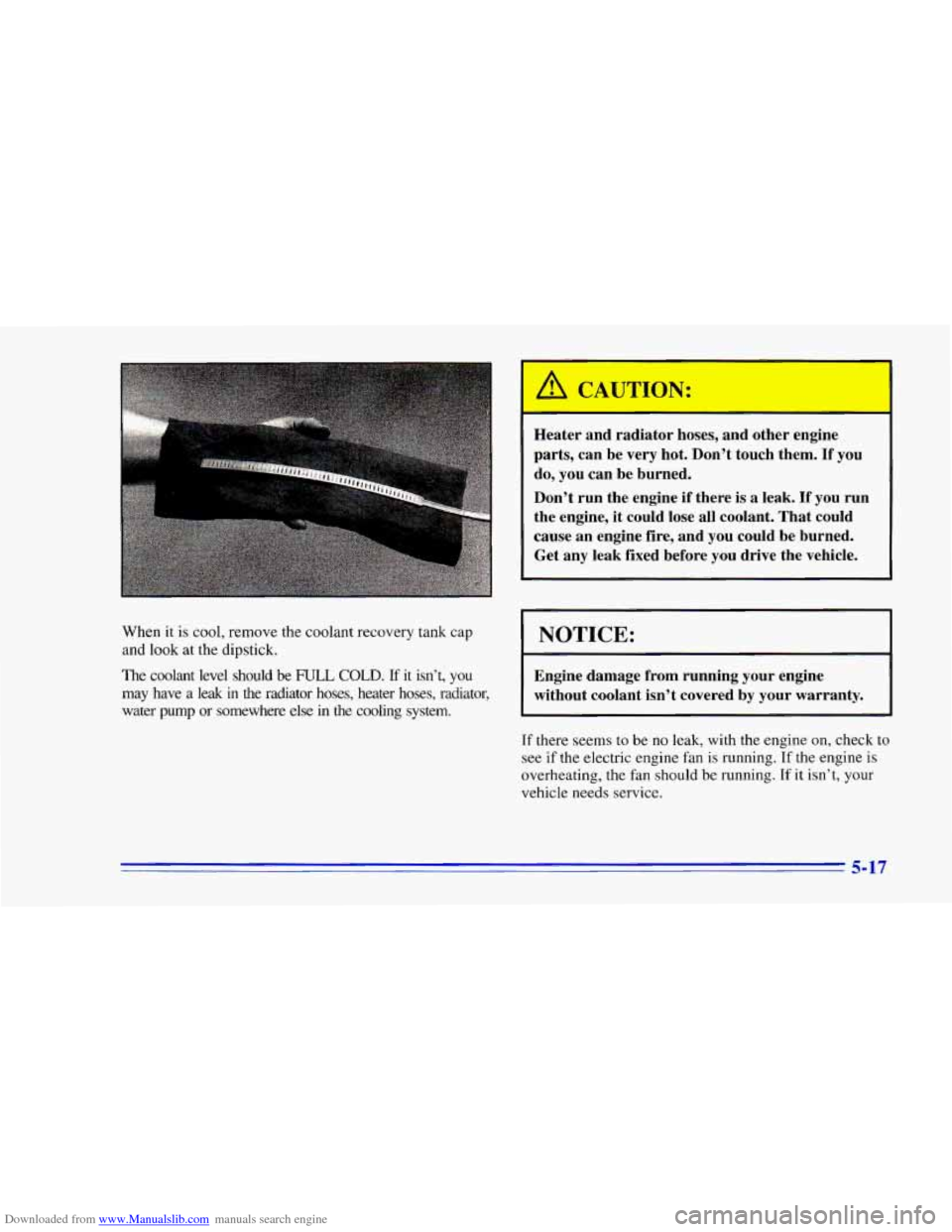
Downloaded from www.Manualslib.com manuals search engine When it is cool, remove the coolant recovery tank cap
and look at the dipstick.
The coolant level should
be FULL COLD. If it isn’t, you
may have a leak in the radiator hoses, heater hoses, radiator,
water pump or somewhere else in the cooling system.
Heater and radiator hoses, and other engine
parts, can be very hot. Don’t touch them.
If you
do, you can be burned.
Don’t run the engine if there is a leak.
If you run
the engine, it could lose all coolant. That could
cause an engine fire, and
you could be burned.
Get any leak fixed before you drive the vehicle.
NOTICE:
~~~
Engine damage from running your engine
without coolant isn’t covered by your warranty.
If there seems to be no leak, with the engine on, check to
see if the electric engine
fan is running. If the engine is
overheating, the fan should be running.
If it isn’t, your
vehicle needs service.
5-17
Page 227 of 402
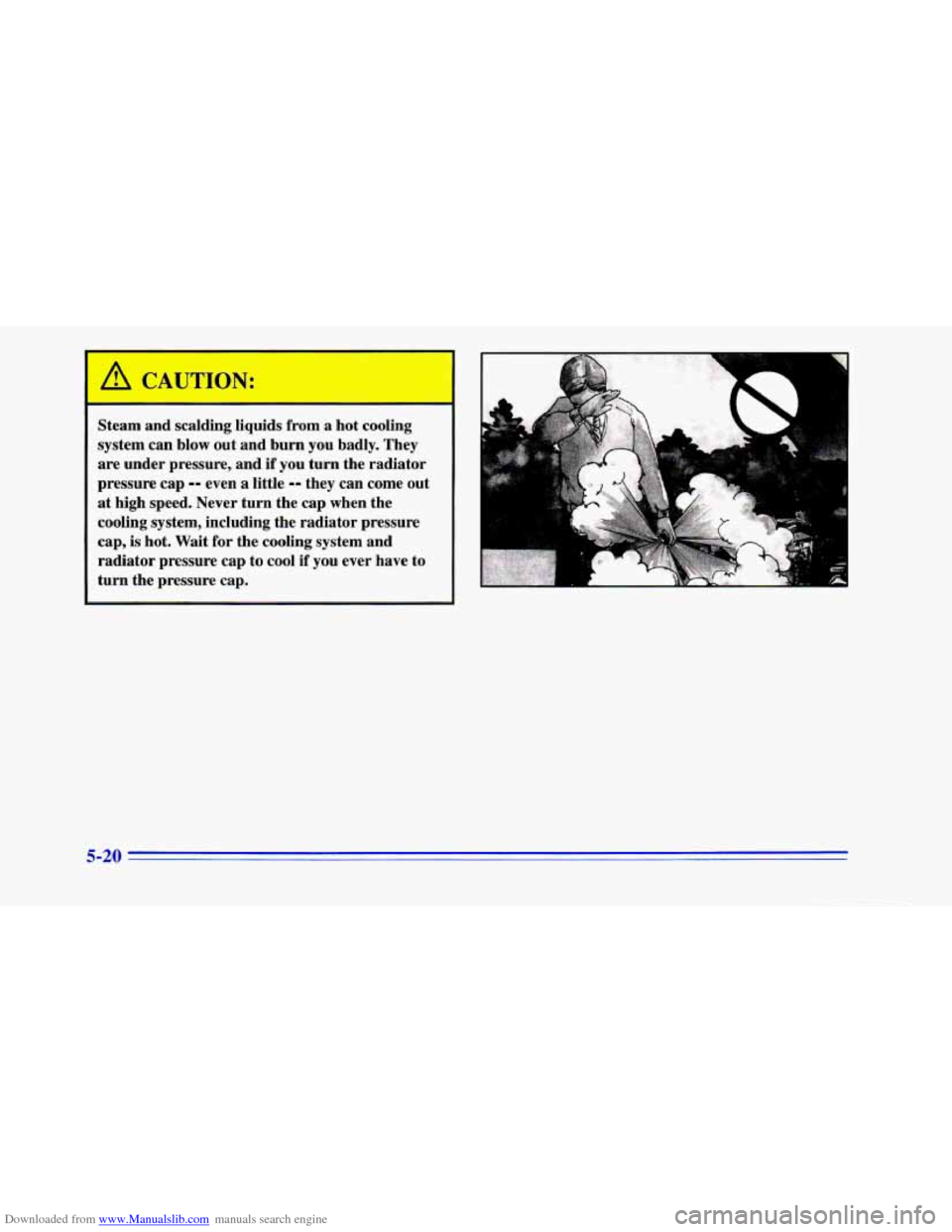
Downloaded from www.Manualslib.com manuals search engine Steam and scalding liquids from a hot cooling
system can blow out and burn you badly. They
are under pressure, and
if you turn the radiator
pressure cap
-- even a little -- they can come out
at high speed. Never turn the cap when the
cooling system, including the radiator pressure
cap, is hot. Wait for the cooling system and
radiator pressure cap
to cool if you ever have to
turn the pressure cap.
5-20
Page 228 of 402
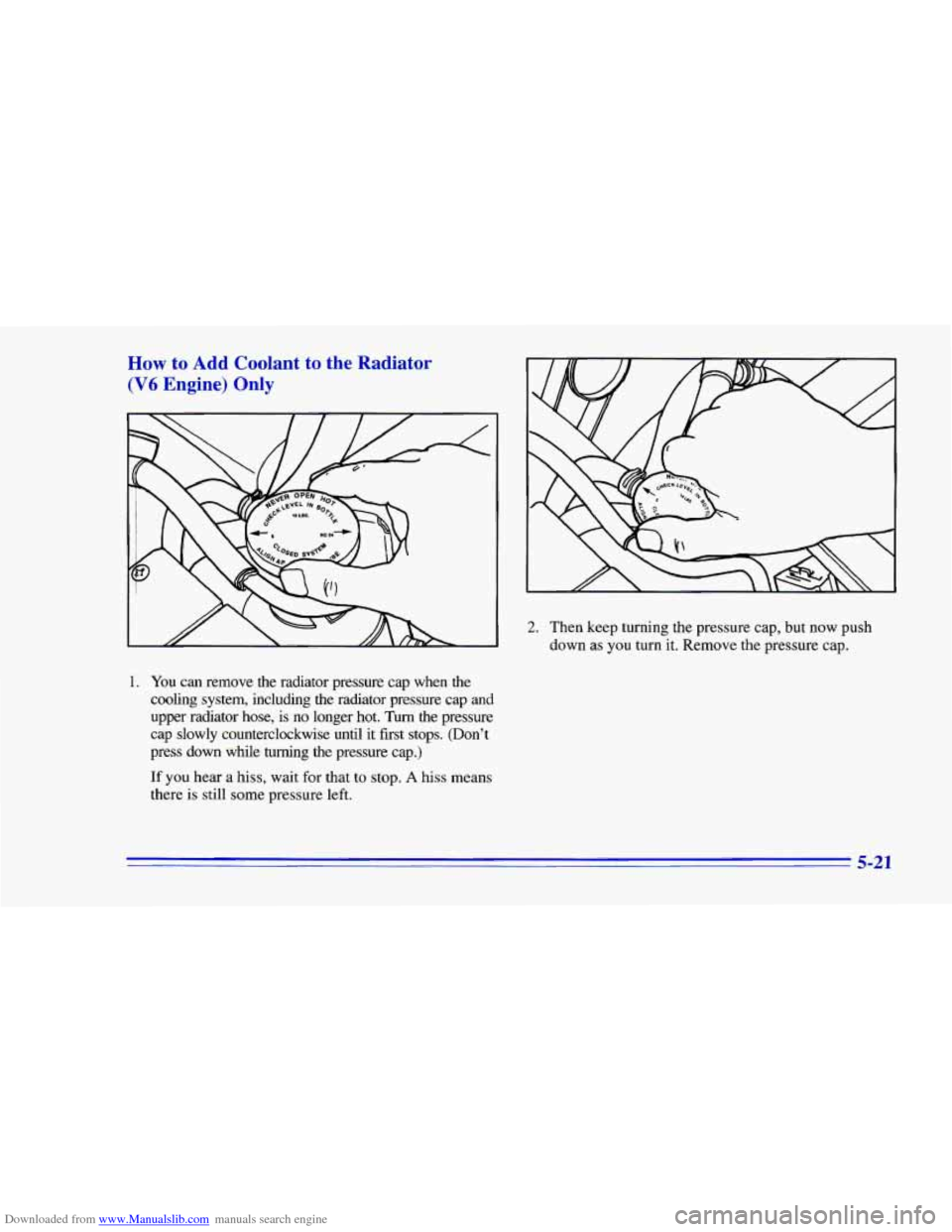
Downloaded from www.Manualslib.com manuals search engine How to Add Coolant to the Radiator
(V6 Engine) Only
1. You can remove the radiator pressure cap when the
cooling system, including the radiator pressure cap
and
upper radiator hose, is no longer hot. Turn the pressure
cap slowly counterclockwise until it first stops. (Don’t
press down while turning the pressure cap.)
If you hear a hiss, wait for that to stop. A hiss means
there is still some pressure left.
2. Then keep turning the pressure cap, but now push
down as you turn
it. Remove the pressure cap.
5-21
Page 229 of 402
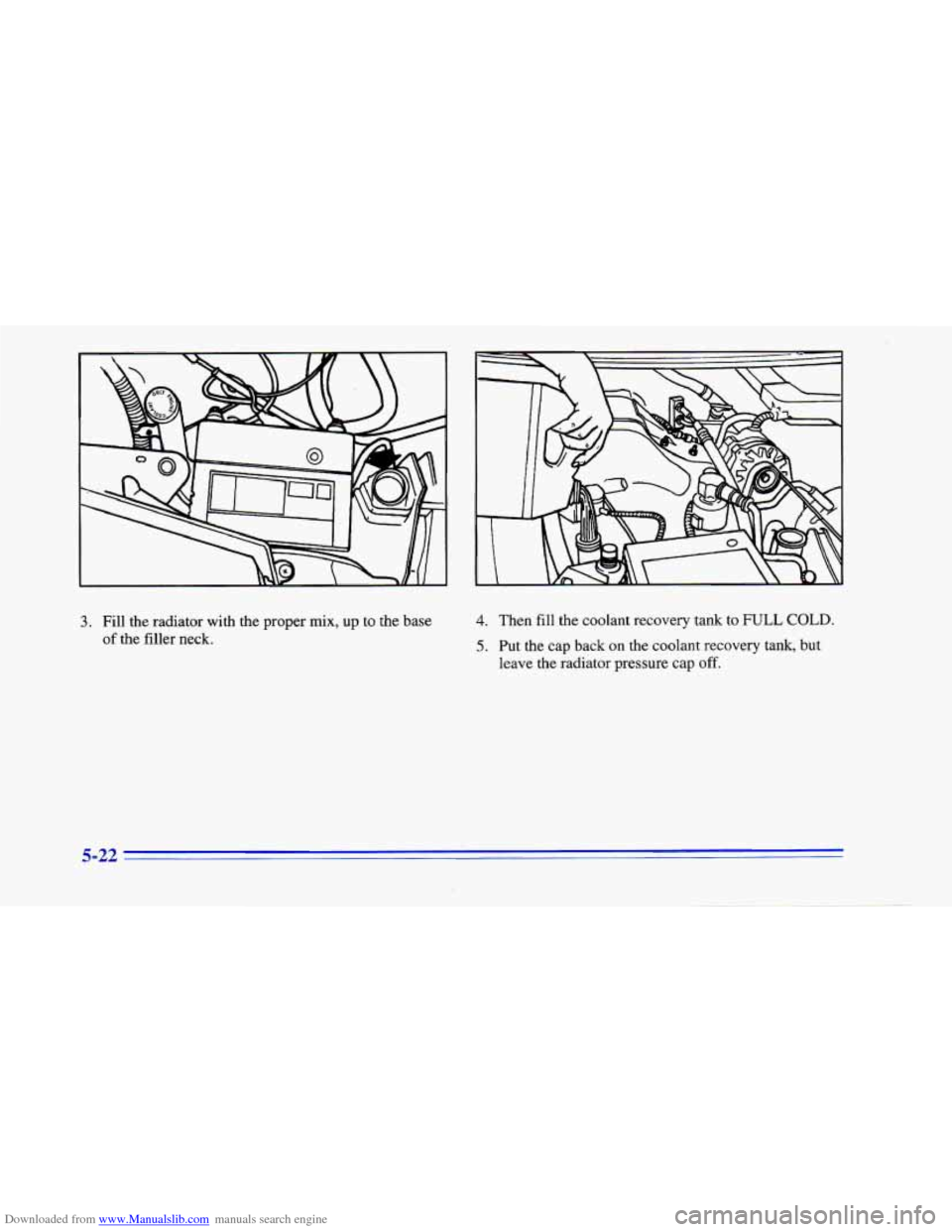
Downloaded from www.Manualslib.com manuals search engine 3. Fill the radiator with the proper mix, up to the base
of the filler neck.
4. Then fill the coolant recovery tank to FULL COLD.
5. Put the cap back on the coolant recovery tank, but
leave the radiator pressure cap
off.
5-22
Page 230 of 402
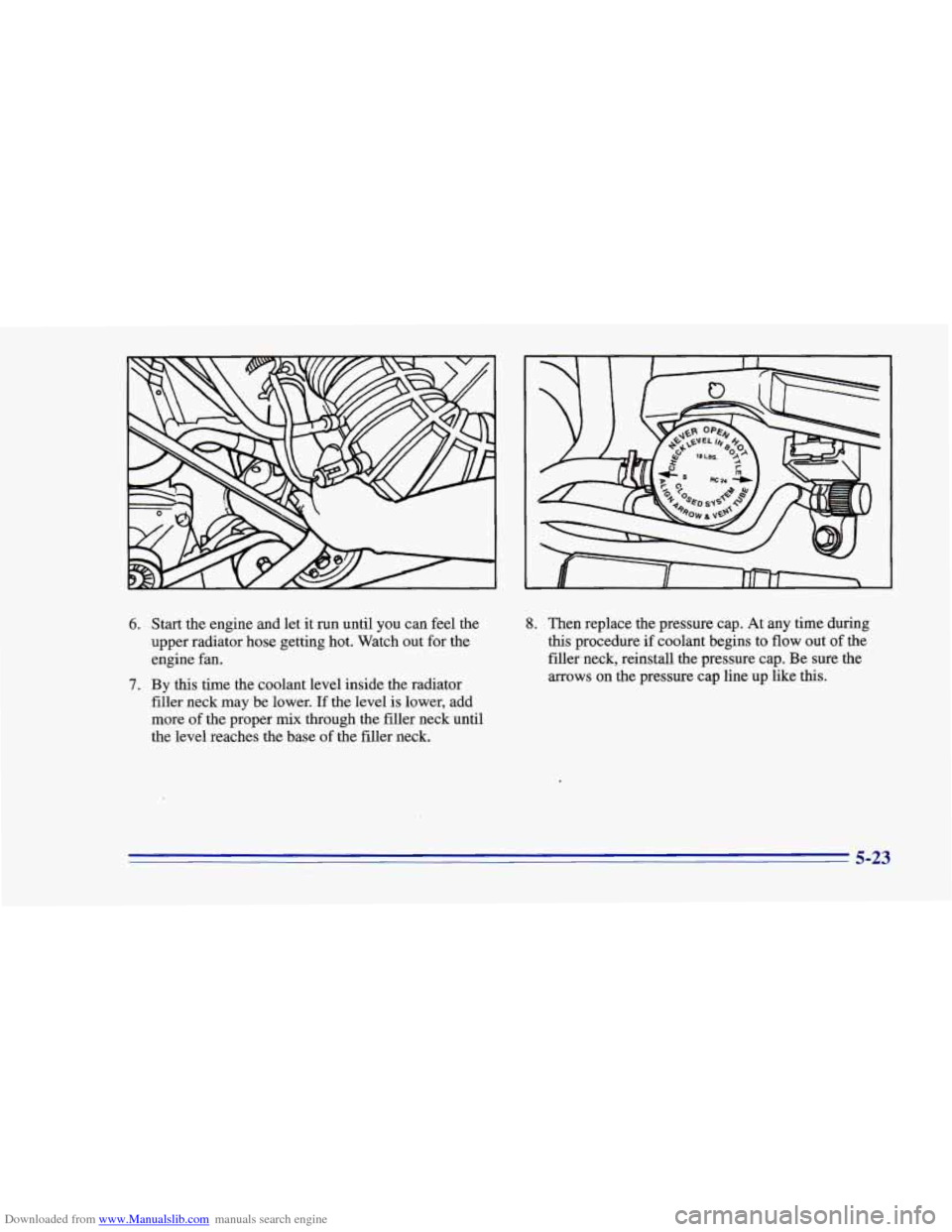
Downloaded from www.Manualslib.com manuals search engine 6.
7.
Start the engine and let it run until you can feel the
upper radiator hose getting hot. Watch out for the
engine fan.
By this time the coolant level inside the radiator
filler neck may be lower. If the level
is lower, add
more of the proper
mix through the filler neck until
the level reaches the base of the filler neck.
8. Then replace the pressure cap. At any time during
this procedure if coolant begins to
flow out of the
filler neck, reinstall the pressure cap. Be sure the
arrows on the pressure cap line up like this.
5-23
Page 231 of 402
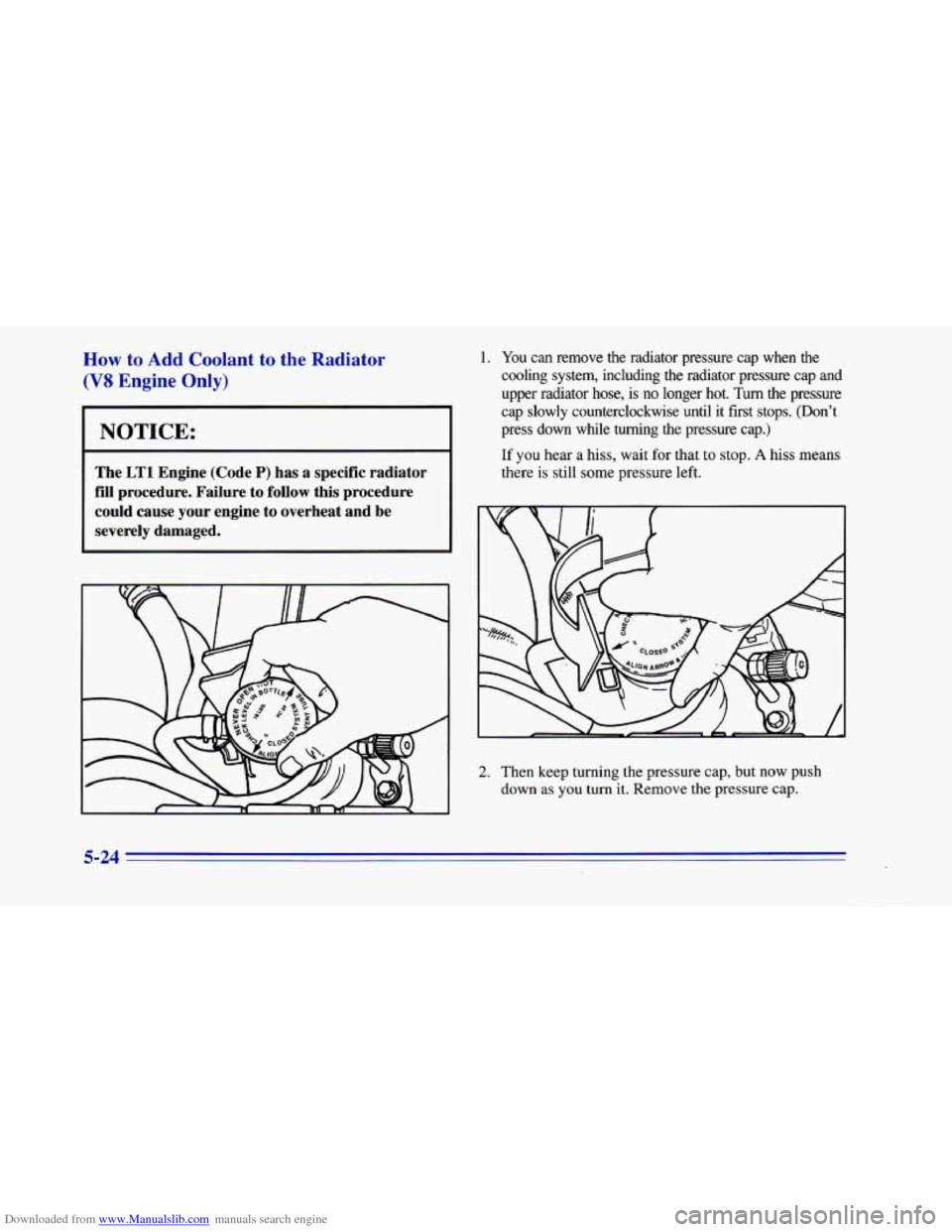
Downloaded from www.Manualslib.com manuals search engine How to Add Coolant to the Radiator
(V8 Engine Only)
NOTICE:
The LTl Engine (Code P) has a specific radiator
fill procedure. Failure
to follow this procedure
could cause your engine
to overheat and be
severely damaged.
1. You can remove the radiator pressure cap when the
cooling system, including the radiator pressure cap
and
upper radiator hose, is no longer hot. Turn the pressure
cap slowly counterclockwise until it first stops. (Don’t
press down while turning the pressure cap.)
If you hear a hiss, wait for that to stop. A hiss means
there is still some pressure
left.
2. Then keep turning the pressure cap, but now push
down as you turn
it. Remove the pressure cap.
Page 279 of 402
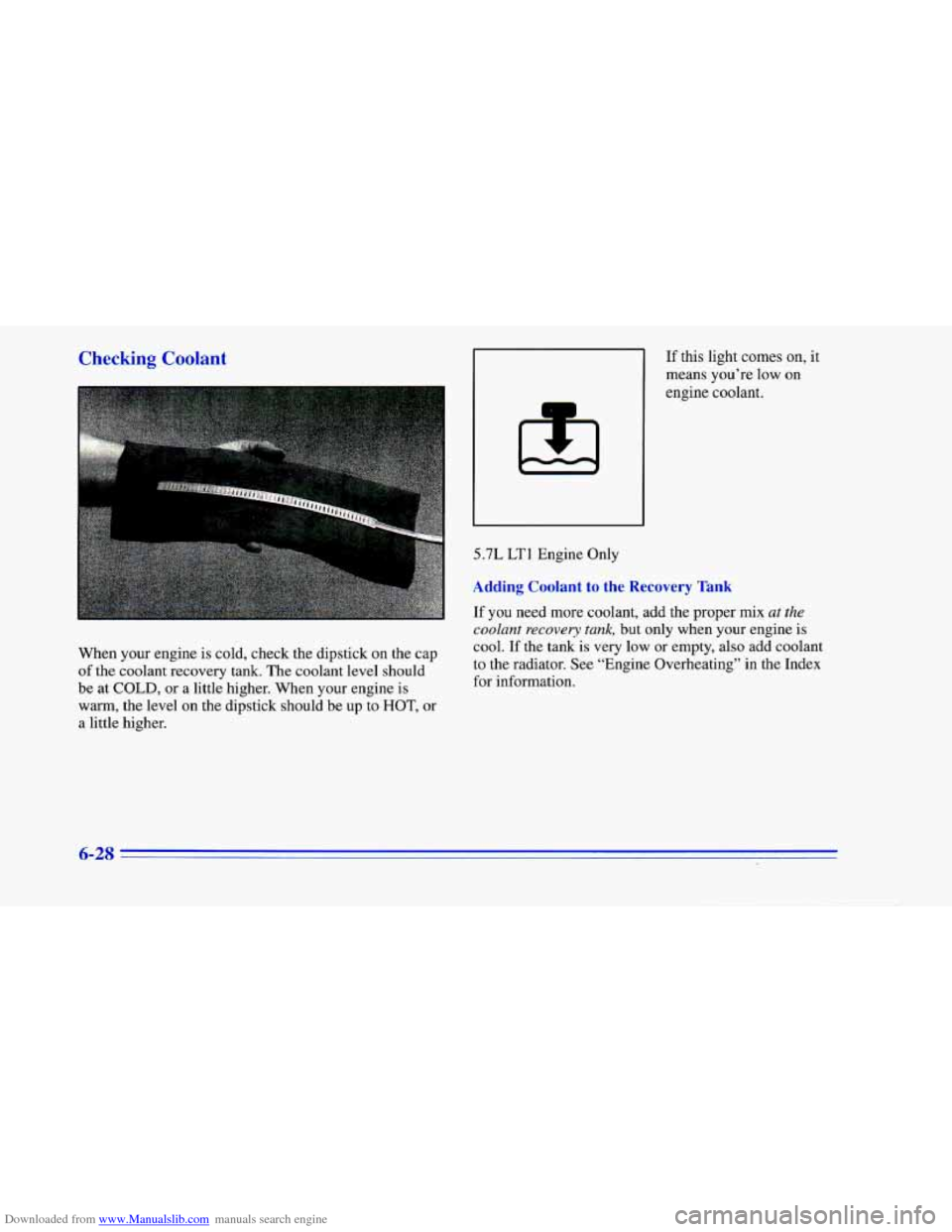
Downloaded from www.Manualslib.com manuals search engine Checking Coolant
When your engine is cold, check the dipstick on the cap
of the coolant recovery tank. The coolant level should
be at
COLD, or a little higher. When your engine is
warm, the level on the dipstick should be
up to HOT, or
a little higher.
1
If this light comes on, it
means you’re low on
5.7L LTl Engine Only
Adding Coolant to e Recovery Tank
If you need more coolant, add the proper mix at the
coolant recovery tank, but only when your engine is
cool.
If the tank is very low or empty, also add coolant
to the radiator. See “Engine Overheating” in the Index
for information.
6-28
Page 280 of 402

Downloaded from www.Manualslib.com manuals search engine Turning the radiator pressure cap when the
engine and radiator are hot
can allow steam
and scalding liquids
to blow out and burn you
badly. Never turn the pressure cap -- even a
little
-- when the engine and radiator are hot.
Add coolant mix at the recovery tank, but be careful not
to spill it.
' 4 CAUTIOh;
You can be burned if you spill coolant on hot
engine parts. Coolant contains ethylene glycol,
and it
will burn if the engine parts are hot
enough. Don't spill coolant on a hot engine.
Radiator Pressure Cap (All Engines)
NOTICE: ~~ -
Your radiator cap is an 18 psi (124 kPa)
pressure-type
cap and must be tightly installed to
prevent coolant
loss and possible engine damage
from overheating. Be sure the arrows on the cap
line
up with the overflow tube on the radiator
filler neck.
When you replace your radiator pressure cap, an AC@
cap is recommended.
6-29
Page 283 of 402
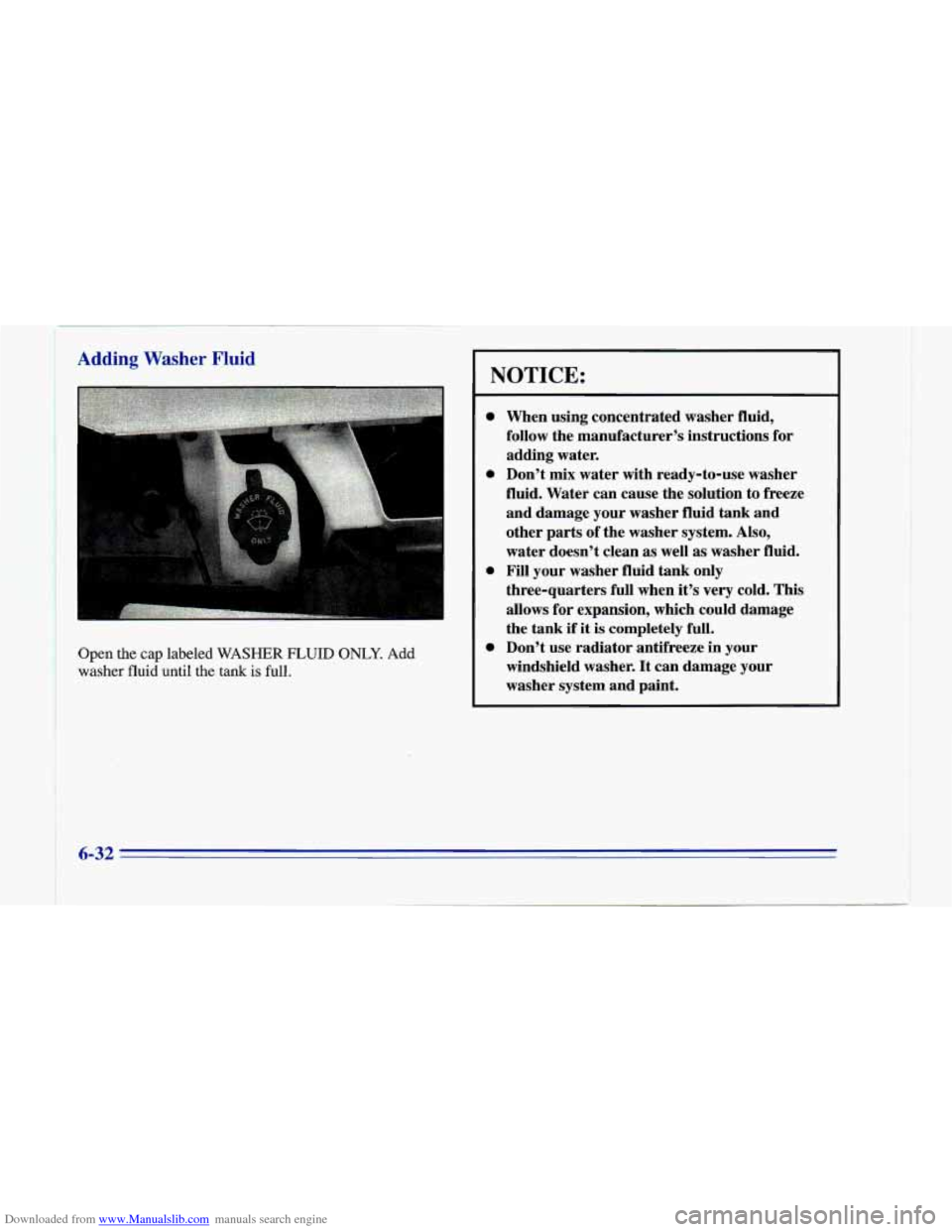
Downloaded from www.Manualslib.com manuals search engine I Adding Washer Fluid
Open the cap labeled WASHER FLUID OmY. Add
washer fluid until the tank is full.
NOTICE:
0
0
0
0
When using concentrated washer fluid,
follow the manufacturer’s instructions for
adding water.
Don’t mix water with ready-to-use washer
fluid. Water can cause the solution to freeze
and damage your washer fluid tank and
other parts of the washer system. Also,
water doesn’t clean
as well as washer fluid.
Fill your washer fluid tank only
three-quarters full when it’s very cold. This
allows for expansion, which could damage
the tank if it is completely full.
Don’t use radiator antifreeze in your
windshield washer.
It can damage your
washer system and paint.
6-32